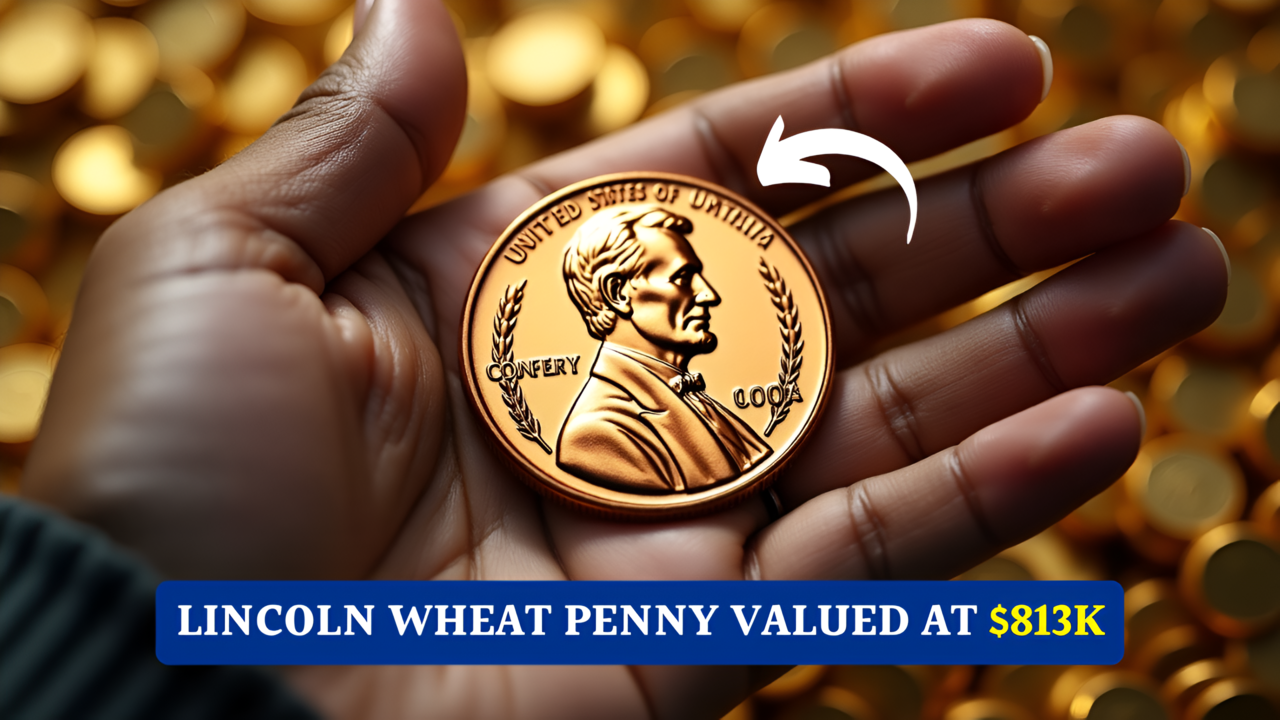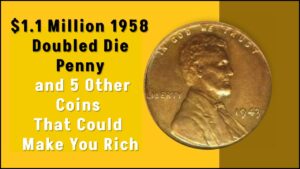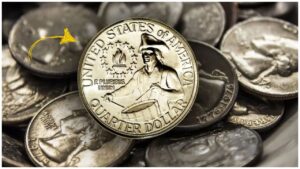In the world of numismatics, few coins capture the imagination quite like the Lincoln Wheat Penny. This humble one-cent piece, minted between 1909 and 1958, has become a symbol of American history and a treasure for collectors. While most Lincoln Wheat Pennies are worth little more than their face value, certain rare specimens have fetched astonishing prices at auction one even valued at $813,000. Could such a valuable coin still be hiding in circulation today? Let’s explore the fascinating story behind the Lincoln Wheat Penny and what makes it so special.
The History of the Lincoln Wheat Penny
The Lincoln Wheat Penny was introduced in 1909 to commemorate the centennial of Abraham Lincoln’s birth. Designed by Victor David Brenner, the coin features a portrait of Lincoln on the obverse (front) and two wheat stalks framing the words “ONE CENT” on the reverse (back). This design remained in use until 1958, when it was replaced by the Lincoln Memorial design.
During its production, the Lincoln Wheat Penny underwent several changes, including variations in metal composition. Most pennies were made of copper, but during World War II, the U.S. Mint temporarily switched to zinc-coated steel to conserve copper for the war effort. These steel pennies, minted in 1943, are among the most distinctive and sought-after varieties.
Why Are Some Lincoln Wheat Pennies So Valuable?
Not all Lincoln Wheat Pennies are rare or valuable, but certain factors can make them worth a fortune. Here are some of the key reasons why specific pennies have become highly prized:
1. Minting Errors
One of the most famous examples is the 1943 Copper Lincoln Wheat Penny. In 1943, pennies were supposed to be made of steel, but a few copper planchets (coin blanks) were mistakenly used. These rare error coins are incredibly valuable due to their scarcity and historical significance.
2. Limited Production
Certain Lincoln Wheat Pennies were produced in limited quantities, making them rare and highly sought after. For example, the 1909-S VDB penny, which features the initials of the designer, had a production run of only 484,000 coins.
3. Condition
The condition of a coin plays a significant role in its value. Coins in mint or uncirculated condition are worth far more than those that show signs of wear and tear.
4. Historical Significance
Some pennies are valuable not just for their rarity but also for their connection to important moments in history, such as wartime production changes.
The Lincoln Wheat Penny Valued at $813k
The Lincoln Wheat Penny valued at $813,000 is a prime example of how rarity and historical significance can drive up the price of a coin. This particular penny is believed to be one of the rare 1943 Copper Lincoln Wheat Pennies. Its extraordinary value stems from the fact that only a handful of these error coins exist, making it one of the rarest and most sought-after coins in American history.
In recent years, similar pennies have fetched even higher prices at auction. For example, a 1943-D Copper Lincoln Wheat Penny sold for $1.7 million, highlighting the enduring appeal of these rare coins among collectors and investors.
Could One of These Pennies Still Be in Circulation?
The idea that a coin worth hundreds of thousands or even millions of dollars could still be in circulation is tantalizing. While most rare Lincoln Wheat Pennies are now in private collections or museums, it’s not impossible for one to turn up in everyday transactions. Here’s why:
1. Oversight
Rare coins can sometimes go unnoticed, especially if they are mixed in with common coins. A valuable penny could easily slip through the cracks and end up in circulation.
2. Estate Sales and Auctions
Coins from old collections or estates may re-enter circulation if they are not properly identified or valued.
3. Lack of Awareness
Many people are unaware of the value of certain coins, leading them to spend or exchange them without realizing their worth.
How to Identify a Rare Lincoln Wheat Penny
If you’re hoping to find a valuable Lincoln Wheat Penny, here are some tips to help you identify one:
1. Check the Date
Look for pennies minted in 1943. If the coin is made of copper rather than steel, it could be extremely valuable.
2. Examine the Mint Mark
Mint marks indicate where a coin was produced. Rare varieties include the 1909-S VDB penny and the 1943-D Copper penny.
3. Assess the Condition
Coins in mint or uncirculated condition are worth more. Look for pennies with minimal wear and clear details.
4. Weigh the Coin
A genuine 1943 Copper penny should weigh approximately 3.11 grams, while a steel penny weighs about 2.7 grams.
5. Seek Professional Authentication
If you believe you’ve found a rare penny, consult a professional numismatist or coin dealer for authentication.
The Enduring Appeal of the Lincoln Wheat Penny
The Lincoln Wheat Penny remains one of the most iconic coins in American history. Its simple yet elegant design, combined with its connection to Abraham Lincoln, has made it a favorite among collectors. Rare specimens, such as the 1943 Copper penny, continue to capture the imagination and spark excitement in the numismatic community.
Whether you’re a seasoned collector or simply curious about the coins in your pocket, the Lincoln Wheat Penny offers a fascinating glimpse into America’s past. Who knows? You might just stumble upon a hidden treasure worth $813,000 or more.
Conclusion
The Lincoln Wheat Penny valued at $813,000 is a testament to the enduring appeal of rare coins and the stories they tell. While the chances of finding such a valuable penny in circulation are slim, the possibility adds an element of excitement to everyday transactions. By learning how to identify rare coins and understanding their historical significance, you can join the ranks of collectors who appreciate the beauty and value of numismatics.
So, the next time you receive change, take a closer look you might just uncover a piece of history worth a fortune.
F&Q
1. What is a Lincoln Wheat Penny?
It’s a one-cent coin minted in the U.S. from 1909 to 1958, featuring Abraham Lincoln on the front and two wheat stalks on the back.
2. Why is the 1943 Copper Penny so valuable?
Because it was a minting error—pennies that year were supposed to be made of steel, but a few were mistakenly struck in copper. Only a few exist.
3. How much is the rarest Lincoln Penny worth?
One rare 1943 Copper Lincoln Penny was valued at $813,000, and others have sold for over $1 million.
4. Can I still find one in circulation?
Yes, though rare, it’s possible a valuable penny is still out there—especially from estate sales or old collections.
5. How can I check if my penny is rare?
Look for the date (1943), test if it’s copper (not magnetic), check for mint marks, and weigh it. Always get professional authentication before selling.


